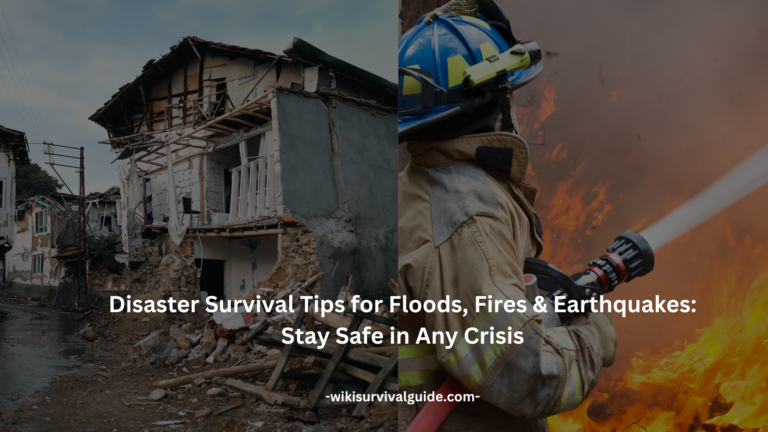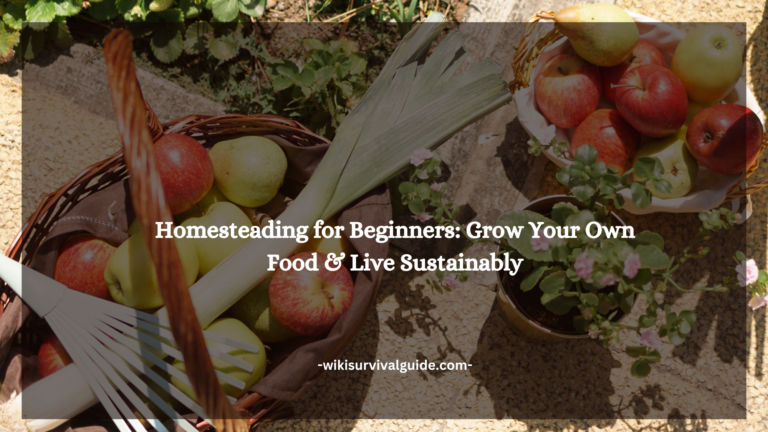“How to live off the grid” is a dream for many who seek independence from modern infrastructure, lower Live Off the Grid, and a closer connection to nature. Whether you want to reduce your carbon footprint, escape the fast-paced city life, or gain self-reliance, off-grid living offers a sustainable lifestyle that provides security, freedom, and resilience.
This guide covers everything you need to know, from choosing the right location to generating power, sourcing water, growing food, and ensuring long-term sustainability.

Choosing the Right Location to Live Off the Grid
Choosing the right location is the foundation of a successful off-grid lifestyle. Several factors need to be considered:
Key Factors to Consider:
- Climate: Moderate climates reduce energy needs, while extreme conditions require more planning.
- Land Availability: Remote areas often have cheaper land, but accessibility is crucial.
- Natural Resources: Ensure access to water, fertile soil, and solar or wind energy potential.
- Legal Restrictions: Some areas have zoning laws that may limit off-grid building options.
Best Locations for Off-Grid Living in the U.S.:
- Alaska – Abundant natural resources but extreme weather.
- Oregon – Favorable laws and a mild climate.
- Texas – Large affordable land parcels.
- Maine – Lots of forests and natural water sources.
How to Generate Power While Living Off the Grid
Reliable energy sources are essential for off-grid living. Solar, wind, and hydroelectric power are the most common renewable energy options.
Solar Power:
- Pros: Abundant energy supply, low maintenance.
- Cons: High initial costs, limited production in cloudy weather.
- Equipment Needed: Solar panels, charge controller, batteries, inverter.
Wind Power:
- Pros: Works day and night, efficient in windy areas.
- Cons: Requires high wind speeds, expensive setup.
Hydroelectric Power:
- Pros: Continuous power supply if a water source is available.
- Cons: Requires running water, legal restrictions in some areas.
Backup Power Options:
- Generators: Useful during extended cloudy periods.
- Battery Banks: Store excess solar or wind power.
Water Sourcing for Off-Grid Living
Water is the most critical resource for survival. Off-grid water systems must be reliable and safe.
Water Sources:
- Wells: Most reliable but require drilling and maintenance.
- Rainwater Harvesting: Sustainable but seasonal.
- Lakes and Rivers: Must be purified before use.
Water Purification Methods:
- Filtration: Removes dirt and large particles.
- Boiling: Kills bacteria and viruses.
- UV Purification: Effective against microorganisms.
Food Production and Self-Sustainability
Growing your own food is essential for self-sufficiency.
Gardening for Off-Grid Living:
- Raised Beds & Greenhouses: Extend growing seasons.
- Permaculture Techniques: Mimic natural ecosystems for sustainability.
- Crop Rotation & Companion Planting: Improve soil health and deter pests.
Raising Livestock:
- Chickens: Provide eggs and meat.
- Goats: Great for milk and land clearing.
- Bees: Honey production and pollination support.
Food Preservation Methods:
- Canning & Fermentation: Store excess harvest.
- Root Cellars: Naturally cool food storage.
- Solar Dehydrators: Dry fruits and vegetables.
Shelter and Off-Grid Housing
Your home should be energy-efficient and designed for sustainability.
Types of Off-Grid Housing:
- Cabins: Simple, durable, and blend with nature.
- Earthships: Built with recycled materials, highly sustainable.
- Tiny Homes: Cost-effective and mobile.
- Yurts & Domes: Energy-efficient with minimal materials.
Sustainable Building Materials:
- Cob and Adobe: Natural and insulative.
- Straw Bale: Excellent insulation for cold climates.
- Reclaimed Wood & Metal: Eco-friendly and cost-saving.
Waste Management and Sanitation
Proper waste disposal ensures hygiene and environmental sustainability.
Toilet Options:
- Composting Toilets: Turn waste into compost.
- Septic Systems: Traditional but require installation.
Waste Reduction Tips:
- Recycle & Repurpose: Reduce waste output.
- Zero-Waste Living: Limit packaged goods and single-use plastics.
Off-Grid Communication and Connectivity
Staying connected is possible even without traditional utilities.
Options for Communication:
- Satellite Internet: Available in remote locations.
- Ham Radio: Great for emergencies.
- Solar-Powered Phones: Charge devices with renewable energy.
Financial Considerations and Cost of Living Off the Grid
While off-grid living can save money, initial costs can be high.
Key Expenses:
- Land Purchase: Varies by location.
- Solar & Wind Energy Systems: $10,000+ initial investment.
- Water & Waste Systems: Well drilling or rainwater systems cost thousands.
Ways to Earn Income Off the Grid:
- Selling Homegrown Produce
- Online Freelancing
- Handmade Crafts and Woodworking
Legal Considerations and Regulations
Before transitioning to off-grid living, understand local laws.
Common Legal Restrictions:
- Building Codes: Some areas have strict construction rules.
- Water Rights: States regulate water collection and usage.
- Zoning Laws: May prevent off-grid construction.
The Challenges of Living Off the Grid
Despite its benefits, off-grid living comes with difficulties.
Common Challenges & Solutions:
- Weather Dependence: Have backup power and food storage.
- Isolation: Maintain communication with the outside world.
- Skill Development: Learn DIY repairs, farming, and survival skills.
Conclusion
Living off the grid offers freedom, sustainability, and self-sufficiency, but it requires careful planning and dedication. By securing land, generating renewable energy, sourcing water, growing food, and managing waste responsibly, you can build a thriving, independent lifestyle.
Would you consider going off-grid? Start your journey today by learning essential skills and preparing for a self-reliant future!
FAQs
1. Is it legal to live off the grid?
Yes, but local laws vary. Always check zoning and building regulations before buying land.
2. How much does it cost to go off the grid?
Initial costs range from $10,000 to $100,000+, depending on location, energy sources, and housing.
3. What is the best renewable energy source for off-grid living?
Solar power is the most common due to its reliability and affordability, but wind and hydroelectric energy are great alternatives.
4. How do you get internet when living off the grid?
Satellite internet and mobile hotspots are the best options for remote areas.
5. Can you live off the grid with a family?
Yes! Many families successfully transition to off-grid living by planning ahead and ensuring all basic needs are met.




1 Comment